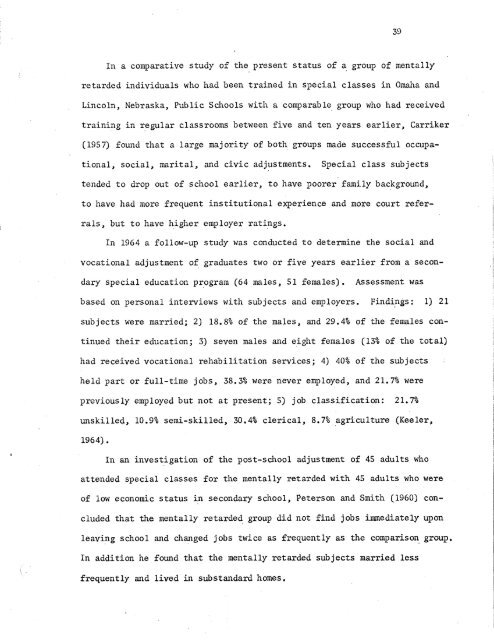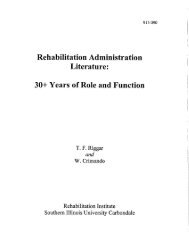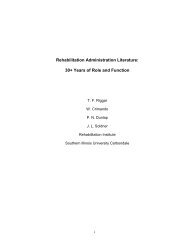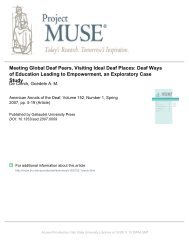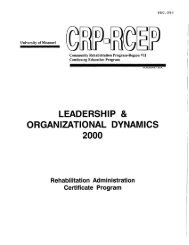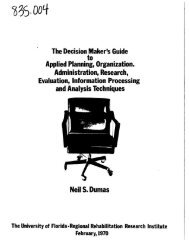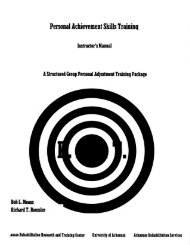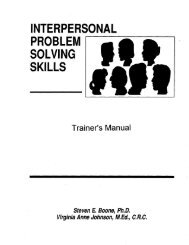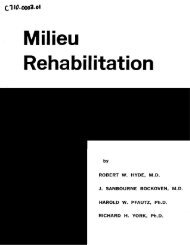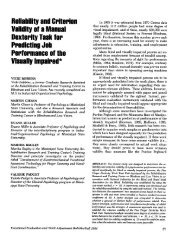by requirements for the degree of (Education) - NCRTM
by requirements for the degree of (Education) - NCRTM
by requirements for the degree of (Education) - NCRTM
You also want an ePaper? Increase the reach of your titles
YUMPU automatically turns print PDFs into web optimized ePapers that Google loves.
In a comparative study <strong>of</strong> <strong>the</strong> present status <strong>of</strong> a group <strong>of</strong> mentally<br />
retarded individuals who had been trained in special classes in Omaha and<br />
Lincoln, Nebraska, Public Schools with a comparable group who had received<br />
training in regular classrooms between five and ten years earlier, Carriker<br />
(1957) found that a large majority <strong>of</strong> both groups made successful occupa-<br />
tional, social, marital, and civic adjustments. Special class subjects<br />
tended to drop out <strong>of</strong> school earlier, to have poorer family background<br />
to have had more frequent institutional experience and more court refer-<br />
rals, but to have higher employer ratings.<br />
In 1964 a follow-up study was conducted to determine <strong>the</strong> social and<br />
vocational adjustment <strong>of</strong> graduates two or five years earlier from a secon-<br />
dary special education Program (64 males, 51 females). Assessment was<br />
based on personal interviews with subjects and employers. Findi.ngs: i) 21<br />
subjects were married; 2) 18.8% <strong>of</strong> <strong>the</strong> males, and 29.4% <strong>of</strong> <strong>the</strong> females con-<br />
tinued <strong>the</strong>ir education; 3) seven males and eight females C13% <strong>of</strong> <strong>the</strong> total)<br />
had received vocational rehabilitation services; 4) 40% <strong>of</strong> <strong>the</strong> subjects<br />
held part or full-time jobs, 38.3% were never employed, and 21.7% were<br />
previously employed but not at present; 5) job classification: 21.7%<br />
unskilled, 10.9% semi-skilled, 30.4% clerical, 8.7% .agriculture (Keeler,<br />
1964).<br />
In an invest.iation <strong>of</strong> <strong>the</strong> post-school adjustment <strong>of</strong> 45 adults who<br />
attended special classes <strong>for</strong> <strong>the</strong> mentally retarded with 45 adults who were<br />
<strong>of</strong> low economic status in secondary school, Peterson and Smith (1960) con-<br />
cluded that <strong>the</strong> mentally retarded group did not find jobs immediately upon<br />
leaving school and changed jobs twice as frequently as <strong>the</strong> comparison group.<br />
In addition he found that <strong>the</strong> mentally retarded subjects married less<br />
frequently and lived in substandard homes.<br />
39


